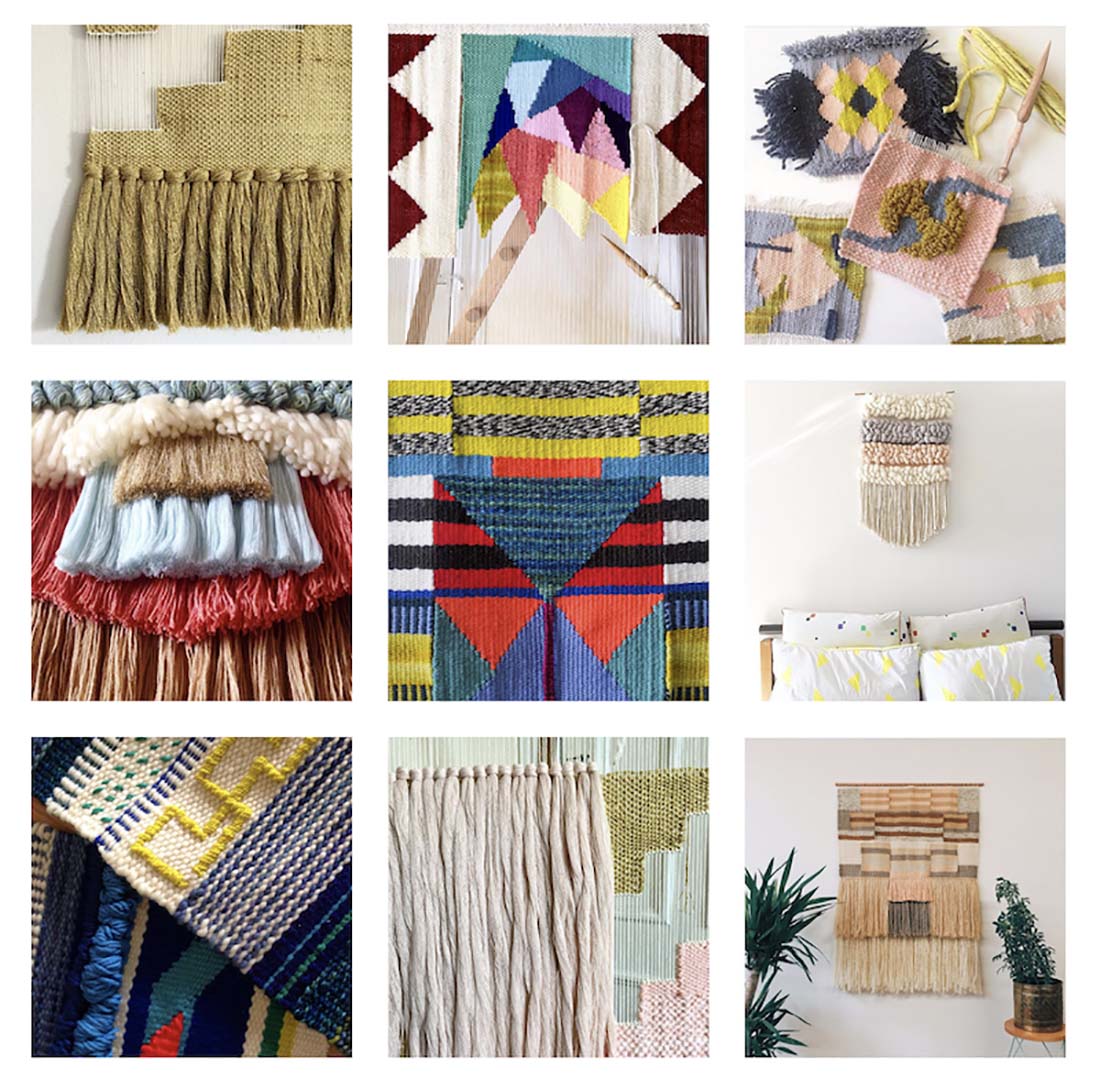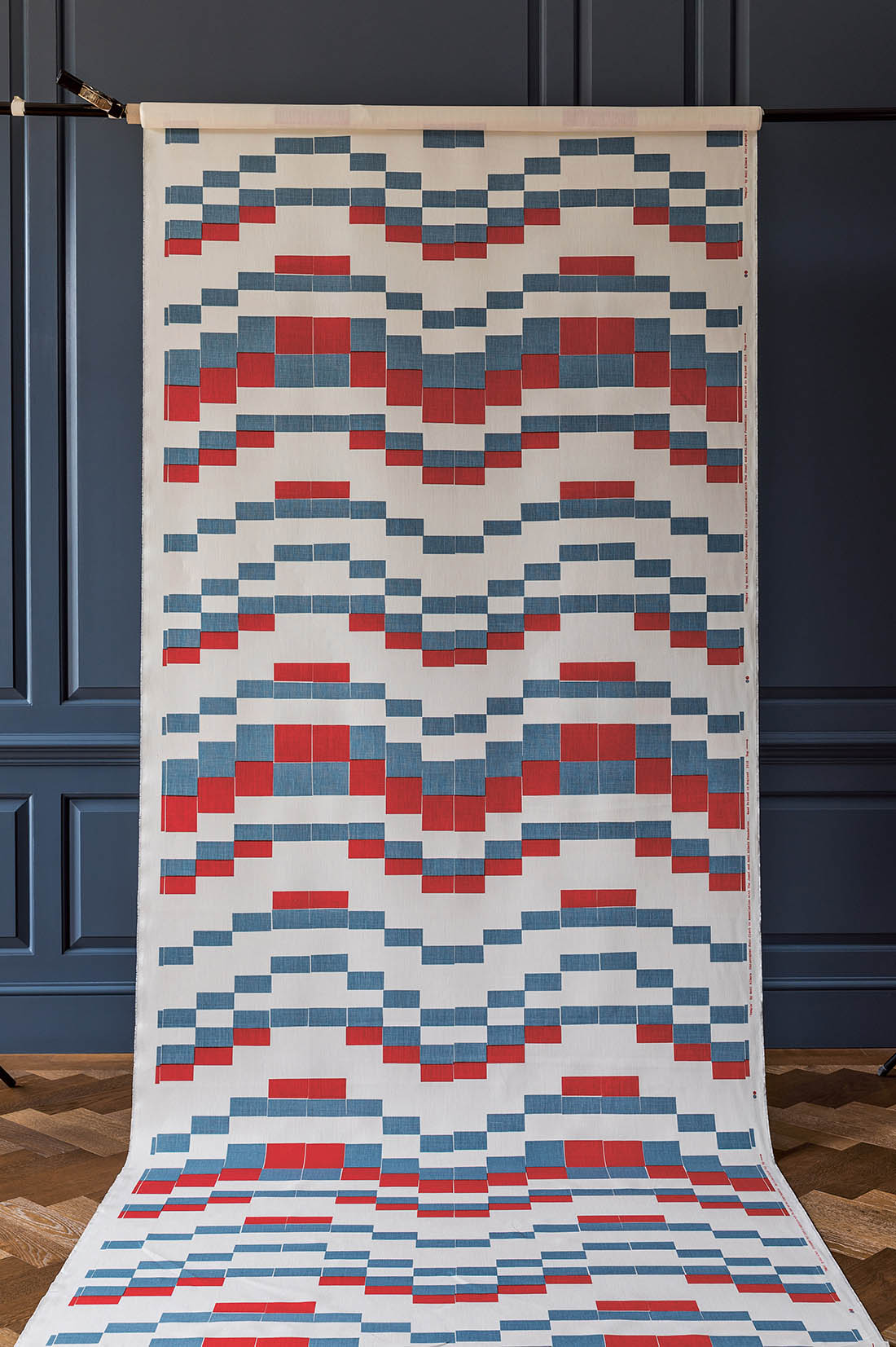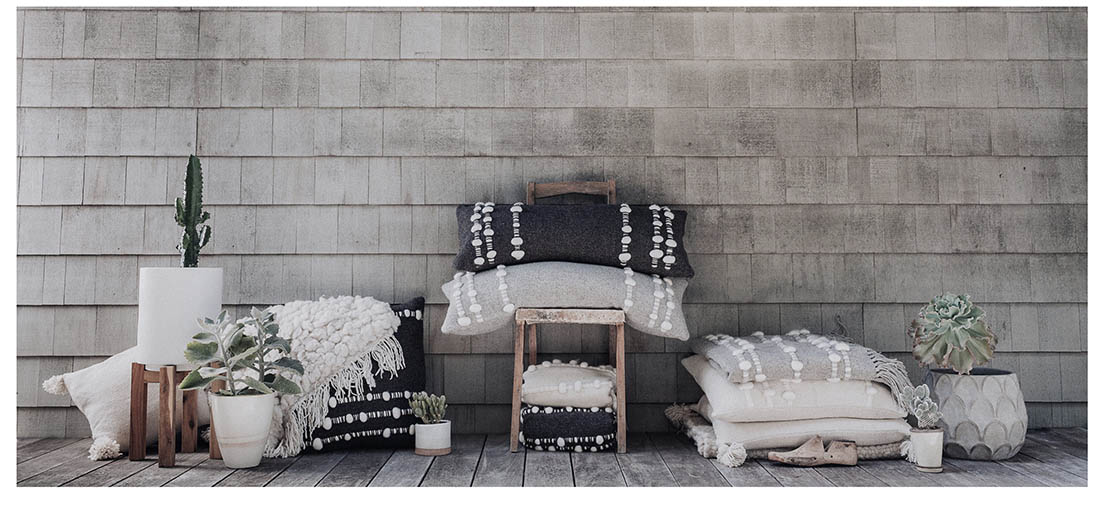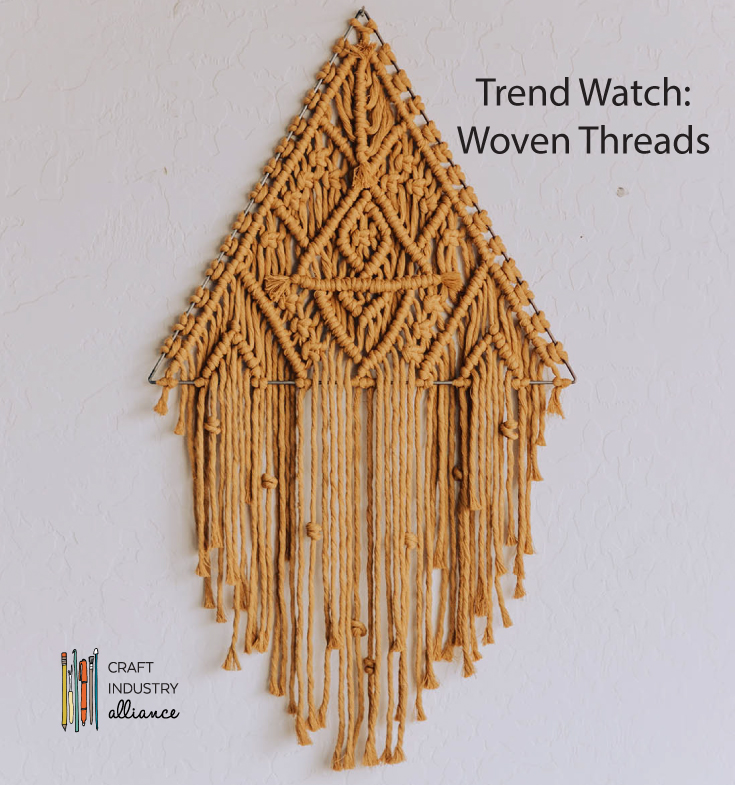The Boho Aesthetic and the Woven Wall Hanging
Anyone who has an eye on crafts cannot escape the avalanche of woven wall hangings that have flooded their feeds in the past few years. You spot them in the photostyling of how-to craft and design books, on movie and TV sets, and in mainstream retailer catalogs.
The trend was in part ushered in like a tsunami by Maryanne Moodie, an Australian weaver who splits her time between Brooklyn and Melbourne. Moodie taught herself to weave on a frame loom and has not looked back. Her fresh sense of color and texture, experiential and experimental style, and her innate desire to share and teach, sparked an interest in the modern weaving movement. Helped along by the resurgence of the BoHo aesthetic with its fascination with fringe, and a few choice media placements in O Magazine and Martha Stewart Living, Maryanne, and others like her, quickly set about creating communities of folks who brought a clean, fresh, modern aesthetic to woven pieces. Soon, the pieces were everywhere on social media, particularly Instagram.

Sampling of Maryanne Moodie’s work.
Photo courtesy of Maryanne Moodie.
A few of these weavers have built relationships with big brands, such as Lindsey Campbell of Hello Hydrangea‘s recent collaboration with Anthropologie, a positive spin on the trend of industry co-opting artisan designs. Campbell started with weaving and has spun into other interlacing forms, such as macramé that has also made a comeback. Macramé is often categorized as an off-loom weaving technique since it is made via interlacing threads as opposed to stitching or looping them, as in crochet or knitting.
Publishers have been actively searching for the “it” weaver who matches their own approach to publishing. Search modern weaving on Amazon and you get a bevy of new books targeted at frame loom and off-loom weavers, a category that has largely been ignored by publishers for the past decade. Most are focused on quick weaves using at-hand or easy-to-get materials that cater to the time-pressed public.
Three years ago, Handwoven magazine, published by Interweave, started offering an annual special issue, Little Looms. It is well-received by magazine buyers eager for projects catered to those who weave on rigid-heddle, frame, tapestry, inkle, and pin looms.
This trend has had an impact on the manufacturing segment of the weaving industry. According to Dave Van Stralen, distributor of Louet looms in North America, sales of their floor looms are on the rise, and he credits much of this with the popularity of smaller looms. “In the past few years we have come out with a new frame and table loom. This was something we had wanted to do for a while, but market conditions weren’t right until now.”
Most of the major loom manufacturers catering to the DIY audience revamped their rigid-heddle looms—a loom that falls between a floor loom and a frame loom—as the rise in popularity in yarn craft grew at the turn of the century. Now many are offering frame looms as well.
Tapestry Trends Up
Since frame looms have gained popularity, there has been a renewed interest in tapestry techniques. Many folks refer to the woven wall hanging lighting up the internet as “tapestry”—some are, and some aren’t. Tapestry is a very specific thing formed by a discontinuous weft structure where only the yarns you weave are showing.
Tapestry has long been a favorite among artists and designers since it is largely a pictorial medium, focusing on composition and image. Design journalist, Katie Treggiden, tapped into this trend in her new book, Weaving: Contemporary Makers, that features a large number of tapestry weavers. Darren Clanford’s write-up on the Creative Boom website showcased many of the featured artists in Treggiden’s book.
Mary Lane, director of the American Tapestry Alliance (ATA), says membership is up. “We have actively worked to post more of our members’ work on social platforms such as Instagram.” This has increased ATA’s visibility at a time when the general trend is responsive to the work. (CIA members get 10% off ATA’s Circle level membership. Click for details about this and other CIA member benefits.)
Interior Design and Fashion
Anni Albers, an artist born of the Bauhaus movement, is receiving a well-deserved revival with the re-issue of her book On Weaving and her retrospective at the Tate Modern in London. Christopher Farr has released a line of fabrics celebrating her work.

Example of patterned fabrics by Christopher Farr.
Photo courtesy of Christopher Farr Cloth
Weaving motifs are showing up in other interior media as well, such as tile and wallpaper. Turkish Towels and Rya rugs have made a comeback. Handwoven throws and pillows reflecting the modern aesthetic of weaving can be seen in many showrooms. New businesses are emerging, such as Treko, that are associated with long-standing weaving communities and embody this modern aesthetic of clear, natural colors and accents of texture.

Example of Treko weaving.
Photo courtesy of Treko.
The trend towards local, traceable, and ethical cloth has been good for weaving. Organizations, such as Khadi, formed to promote a special kind of woven cloth, have been seeking active partnerships with designers and weavers worldwide to use Indian weaves in their designs.
Industry Wide
These trends reach far deeper than style. They are also holding true in science, technology, and manufacturing. In 2016, MIT founded Advanced Functional Fabrics of America (AFFOA) that is working to create smart textiles largely manufactured in the U.S. This has brought together a large collation of scientists, engineers, mill operators, farmers, ranchers, makers, and designers to create fabrics that do nifty things such as moderate temperature and store energy. While not solely focused on weaving, many of the fabrics are woven.
This is a bright spot for manufacturing in the United States. While it is still not easy, as outlined in the recent New York Times article, The Annals of Flannel, there are signs that industrial weaving in the U.S. is on an upswing.
Staying Power
I cringe slightly when reading headlines that refer to weaving as a dying art. Nothing could be further from the truth. Weaving embodies resistance—Luddites were weavers—and the promise of the future. Computers were born from binary weaving technology of the Jacquard loom. While it is true that weaving is having a moment, weaving, like all our chosen craft pursuits, will be here long after the moment has passed and many of us will wait patiently until it comes around again.
If you are interested in listening to the many voices of today’s weaving community, I highly recommend the Weave podcast, started in February 2018 by Gist Yarn and Fiber.

Liz Gipson
contributor
Liz Gipson of Yarnworker is steadily crossing a long list of fiber festivals off her life list. This year, she is thrilled to be teaching four workshops at Maryland Sheep and Wool. Her local show is the Taos Wool Festival. Check out her Rigid Heddle Road Trip video from last year to get a virtual peek at this festival and the surrounding area.


thanks for sharing. good news
Good overview of good news. Thanks, Liz.
Liz, you begin by stating that “Weaving rarely surfaces to the level of popular culture” and now it has. However, the hand weaving community has not really taken on the task of popularization as the knit community has. Where is the marketing to the popular culture? Where is inclusion in TV ads? I interface with the public on a tiny scale on the Alabama Gulf Coast at my business Clara’s Loom. Many new retirees and those about to retire are amazed to meet a weaver accessible to the public in a retail setting. They say they never considered weaving as an activity because they never see it. HGA markets to themselves not the public.
A lot of us have been weaving pretty darn amazing tapestries for a very long time. We just didn’t get the glow from Instagram to send us into pop culture. Check out the ATA website and be blown away: https://americantapestryalliance.org. The new weavers seem to harken back to what I call “the entanglements” from the 60s. The problem is the current deluge of weavers are breaking all the rules. It’s kind of like picking up a paintbrush and smudging some paint on newsprint and believing you can paint. Hats off to them for trying. But shoving some roving into some warp and then ending it with fringe has its limitations. Fortunately, there are some amazing tapestry teachers online trying to direct folks to the other side to the difficult techniques of tapestry which can take years to learn. As the owner of the premiere tapestry loom company in the U.S. I have seen it all. Weaving is not something you learn in a day.
Thanks, Claudia!